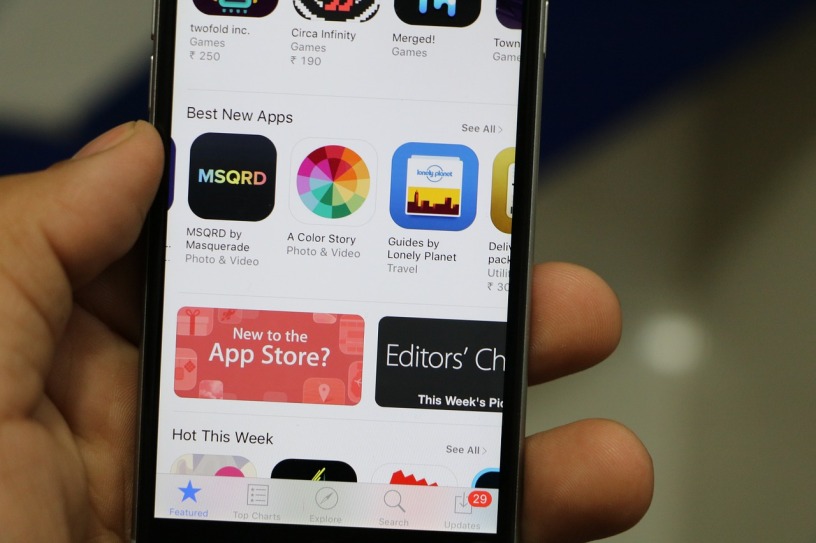Apple’s 30% vig may yet come home to roost. Yesterday, the Supreme Court reached a decision in Apple, Inc. vs. Pepper, a 2011 case concerning whether a group of iPhone owners led by Robert Pepper had standing to sue Apple over its practice of restricting iOS devices to apps sold in its own store. Apple contended that since it was just acting as agent for the retailers, the users needed to sue the retailers or the retailers needed to sue Apple. Ruling 5-4, with new Justice Kavanaugh joining the liberals, the court found that Apple’s “gerrymandering” the rules to try to avoid a lawsuit wasn’t legally supported, and Pepper’s suit could go forward in a lower court. The ruling doesn’t go into the actual legal merits of the case—it only means that the plaintiffs are now finally able, after eight years of legal wrangling, to go ahead and have a lower court look at those merits.
The purpose of the suit seems pretty straightforward. Pepper holds that, in restricting iOS device owners only to shopping at Apple’s app store, from which Apple takes a 30% cut of all app and in-app purchase prices (dropping to 15% of subscription rates after the first year), Apple is driving up prices for consumers as the app developers pass that surcharge on to them. The suit cites the example of Spotify, who charged Apple users $3 more than it charged other consumers to cover the 30% fee Apple charges for in-store purchases. (Other companies that sell products via their apps, such as Amazon, often choose to disable Apple in-app purchases altogether and just sell their goods via separate web browser sessions.) Spotify has also filed an antitrust complaint against Apple in the EU over this matter, and the EU will begin investigating the complaint within a few weeks.
Apple seems to be unique among tablet and phone platforms in how tightly it restricts its device owners. Google and Amazon take a cut of purchase prices but don’t demand a cut of in-app purchases (for most categories; for some, such as games, there are exceptions), and they allow their users to install apps from external sources. While not many app developers have eschewed those manufacturer stores even so, Epic did make the news for deciding to keep its popular mobile game Fortnite out of Google Play’s app store and sell directly to consumers instead so as not to pay a cut to Google. (As the recent news about Borderland 3‘s Epic Store exlusivity demonstrates, Epic just seems not to like putting things in other people’s app stores.)
If iOS device owners could install versions of apps that didn’t come from Apple, sellers of those apps likewise wouldn’t have to pay a cut to Apple, and stores with in-app purchases wouldn’t have to pay Apple a percentage on purchases made through those non-Apple-store apps. Amazon could offer its own iOS Kindle app installed from Amazon, rather than Apple, through which it could sell ebooks directly again without paying Apple anything.
But on the other hand, allowing external apps would mean users could potentially expose themselves to trojans or other malware, and Apple has always (well, except for that earlier period when Steve Jobs wasn’t at the helm) been one to prefer tight control over its products and the end user experience. Apple’s mobile products tend to be sold more as information appliances than more open personal computing devices.
Also, many makers of computing and media appliances in other fields traditionally keep tight control over their user software and media markets—for example, video game consoles. They just don’t get as much attention as Apple because people have always accepted that video game console makers wield tight control over what products get licensed. If Pepper did eventually win his case against Apple, in addition to endangering Apple’s app store cash cow (and requiring Apple to pay back some amount of the overcharges to past customers), it could spell trouble for quite a number of manufacturer marketplaces.
But how likely is that, really? It’s true that if Apple charges developers and stores a 30% fee, naturally those stores are going to pass those same costs on to consumers. But that doesn’t necessarily mean it’s an illegal monopoly.
If consumers really want a choice, they already have a choice of platform. They could buy Android or Windows tablets instead of Apple if they want to use other apps. By the same token, app developers don’t have to make their apps available for Apple at all—and as we’ve already seen, stores and subscription services can just make their apps available without selling the ebooks or services directly through those apps. If you don’t want to play by Apple’s rules, you don’t have to play in Apple’s house.
Industry commentator Philip Elmer-DeWitt finds that opinions are divided on how likely it is that this suit will eventually succeed. I’m also a bit dubious. It seems a bit unlikely that any lower court is going to upset the applecart (pun not intended) by forcing sweeping changes to the way computing appliance manufacturer marketplaces work—though appeals courts, which tend to be more willing to entertain changes, might be another story. This case might very well find itself back up at the Supreme Court again in another few years.

